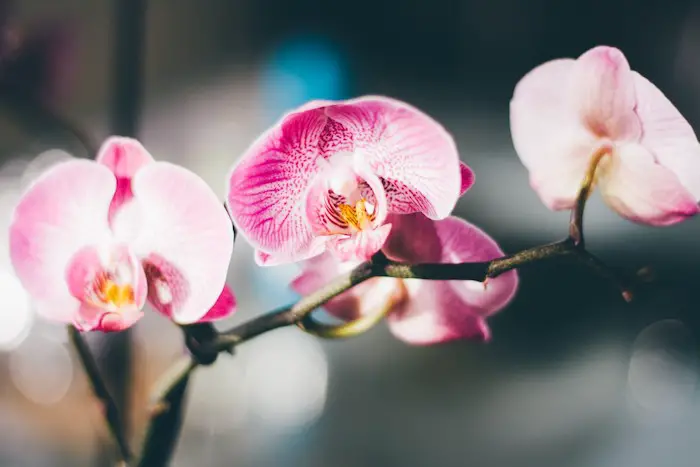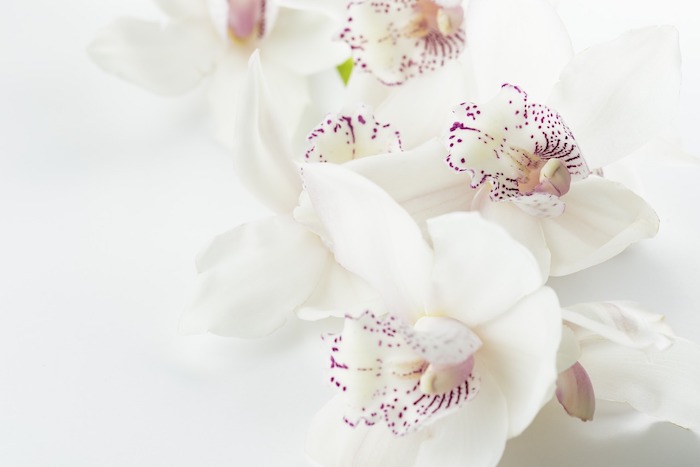Orchids look like an ethereal flower that God took special care and time to create. So delicate, bright, and beautiful, they can breathe life into any space. It’s hard to believe that they can be toxic or poisonous for anyone! However, it cannot be ignored that many people around the world think that orchids are toxic for pets.
So, are Orchids poisonous? The answer is both No and Yes. Most studies have shown that the flowers and leaves are non- poisonous. Some Orchids are edible and not many people know that vanilla bean is also an Orchid. However, there are some species that may cause rashes, skin irritation, and sickness in pets.
The potting media used for growing Orchids can be poisonous. A decade ago, the cultivators included redwood bark in the potting mixes leading to skin allergies and breathing problems. This practice was later discontinued due to health grounds. While adults are less likely to eat potting mix, furry friends and inquisitive toddlers are more vulnerable.
Although redwood bark is no more used in the potting mixes, other items such as chemical fertilizers and additional nutrients may also cause gastrointestinal irritation and damage (if ingested). So, if you have kids and pets at home, you will need to keep the Orchid plants in a location away from them.
Toxic and Non-Toxic Orchid Species
Some gave a very good example by comparing Orchids with dogs. Plant lovers are as obsessed with the Orchids, as animal lovers are with dog. As a result, both of them have been cross-bred extensively to create new and better genetic lines.
Over the centuries, different orchids have been discovered and cross-bred. Today, there are approximately 25,000 orchid species known worldwide, but you will be surprised to know that there are at least 100,000 different hybrids that are registered.
Due to extensive breeding, the genetic lineages of newer orchid hybrids are intricate. Although most of the common orchids are not considered as poisonous for pets, there’s a higher chance that the hybrids may contain a harmful compound in the flowers or leaves that may be bad for your pet’s health.
If you consider the list of toxic and non-toxic plants published yearly by the American Society for the Prevention of Cruelty to Animal (ASPCA), most Orchids species fall under the non-toxic list. However, the list is non-exhaustive and mostly contains the commonly encountered plants in the US.
However, you must also be aware that there are several non-orchid-family plants that may be often referred to as orchids due to their close resemblance, but they are not. So, plants that may have ‘orchid’ in their name but do not belong to the Orchidaceae (Orchid family) may be poisonous for pets.
So, you need to be careful about the identity of the plant before considering it to be safe for your furry friends or little ones. The Orchid tree, for example, does not belong to the Orchid family, but to the Fabaceae family instead.
Risks Involved With Having Orchids At Home
Interestingly, all true Orchids are not commonly named as Orchid but may be referred to with ambiguous names such as lady’s tresses or lady slippers. This can make things confusing as it often becomes difficult to tell which one is real Orchid and which is not.
This further adds to the concern of people having a pet dog or cat that eats an unknown plant that looks like Orchid. So, it’s important to look into the risks involved if a pet or child accidentally eats a flower or leaves of an Orchid plant.
As with any other plant the side effects from ingesting Orchids will depend upon the size of the animal, it’s weight and the amount of plant consumed. A smaller animal such as a Chihuahua can show reactions even if it eats small plant material, as compared to a German Shepherd.
Sometimes your furry friends may experience an upset stomach, coughing , and vomiting even after eating fresh non-toxic greenery. Even though ASPCA evidences say most Orchid species are not toxic, it cannot be ignored that all species (including the hybrids) are not checked or tested.
To reduce the risk for pets, we suggest that you train the pets to not eat Orchid flowers or leaves or simply keep them away. If your pet still eats a plant material by mistake, you should first identify the type of plant eaten, whether or not it is an Orchid (during walks or hikes).
Even if you assume that the plant is not toxic, we would still suggest that you keep a watchful eye on the pet for any symptoms of sickness such as behavioral changes, foaming, boating, not wanting to eat, and so on. If you notice any symptoms, contact your veterinarian immediately.
Four Levels of Toxicity In Household Plants
If you have pets at home, it’s important for you to be aware of the possible consequences involved if your cat or dog eats household plant material, including Orchids. There are mainly four different levels of toxicity that we have discussed below:
#1. Major Toxicity Level
There are certain types of plants that may cause serious illness if ingested by mistake, and even lead to death. Although Orchids is not one of them, there are still many plants that come into this category. If your furry friends eat any of the toxic plant materials by mistake, take them to the vet immediately.
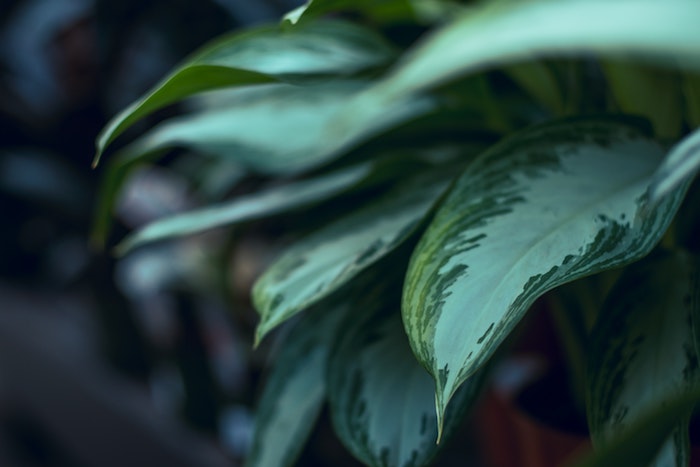
A popular example is Dieffenbachia or Dumb Cane that has visually pleasing leaves and many gardeners love it because it needs little care. However, this plant is extremely harmful to pets. If ingested and not treated on time, the allergic reaction gets so strong that it ends up swelling and closing airways, leading to death.
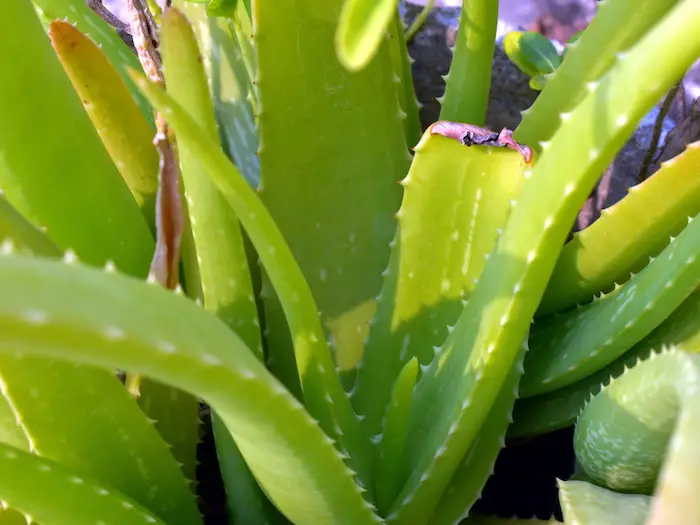
A shocking example of a highly toxic household plant for pets is the Aloe Vera plant. While it has amazing healing qualities for humans, they are not good for your furry friends. Although it might not cause death, it may lead to severe consequences. Some common signs include diarrhea, vomiting, and tremors.
#2. Minor Toxicity
These houseplants may not cause death, but may lead to severe diarrhea and vomiting if ingested. Although no Orchids species fall in this category, there are many common houseplants that are minor toxic. These side effects take place because the animals sense the toxic elements and feel the need to get rid of them immediately.
A common household and easy-to-grow Jade plant is also toxic to animals. They need little care, hence find a place in many households. If eaten, the plant materials may cause vomiting in pets. Several species of lilies are also considered toxic to animals, causing loss of appetite and drooling.
#3. Oxalates
Another common reaction to consuming oxalates is severe allergic reaction including irritation of the eyes, nose, skin, throat, and mucus membrane. It may cause difficulty in breathing. If these symptoms become serious, the throat may swell shut causing dire consequences. Thankfully no Orchids are listed in this category.
There are several indoor and outdoor plants from the Araceae family that contain insoluble calcium oxalates. Some examples include Dumbcane, Dieffenbachia, Peace Lily, Philodendron, Elephant’s Ear, Chinese Evergreen, Umbrella Plant, and Schefflera.
#4. Dermatitis
This is the least severe of all the above categories, yet you need to be careful with it. If animals or humans come in contact with sap, juice, or thorns of toxic plants, this can develop skin rashes or blisters in the body.
An example is the asparagus fern household plant that’s commonly found in households. However, there’s a risk involved for pets. Brushing of skin with the plant may cause skin irritation in dogs and cats, plus the small berries are also not appetizing, so keep these plants out of reach.
We also have an Orchid in this category and it is called the Cypripedium Reginae, also known as showy lady’s slipper or lady slipper orchid. Although it does not contain oxalates or fall under major and minor toxic plants, they may cause dermatitis. They may not cause death, but Cypripedium Reginae may cause skin irritation similar to poison ivy.
Possible Side Effects Of Ingesting Orchids
Well, we see that there many household plants that may be high, moderate, or low in toxicity levels for pets. Although Orchids luckily don’t fall in these categories (at least not the common species that are tested), ingesting Orchids may still cause some side effects that we will discuss below.
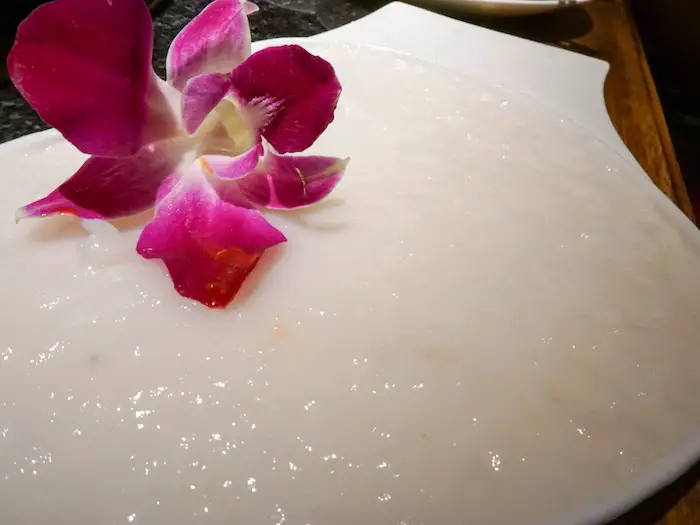
There are some types of Orchids that are actually edible, such as the Dendrobium, which is often used for decorating salads and meals for fine dining. However, be careful with animals because some species may cause irritation in the stomach lining.
Orchids such as Oncidium and Delirium may cause temporary hysteria in a pet, however, the effects are short-lived. Some pet owners find it extremely amusing to see watch their pets play with Orchids and have a great time.
Although eating the plant material may not do much harm, at least nothing that is documented, ingesting the potting mix can be harmful. The potting mix usually contains barks and chunks that cause eye and lung allergies. Even playing with the potting mix may be harmful to your pet.
Even the fertilizers and pesticides used in the potting mix are not safe for your pooch or fluffy. The soil is often loaded with chemical-based fertilizers that can create havoc with the animal’s digestive system if ingested.
Signs And Symptoms To Watch Out For
If you were away from home when your pet ingested a toxic plant, it could be hard to tell the reason. So, we suggest that you look for signs of distress and check the household plants to see which one has a chewed leaf or flower. Here are some usual signs and symptoms to look for:
· Your dog will start panting after ingesting hazardous plant material
· The breathing may become much faster and shallower than usual
· They might stick out their tongue out longer than normal
· Other signs are vomiting, drooling, diarrhea, agitation, and tremors.
The reasons for the above behavior could be many. Maybe the lungs are not able to exchange gas properly resulting in carbon dioxide building up, throat lining could be swelling causing difficulty in breathing. Panting for a long period of time may increase heartbeat and lead to strenuous muscle movements.
Tips To Keep Orchids Away From Pets
While Orchids are not poisonous, you may not want your cat or dog to nibble on the plant that you grow with so much care and patience. Here are some tips to help you keep the Orchids away from your furry friends or naughty toddlers.
- Create a separate orchid oasis at home where you can display your collection of prized plants. This could be an area in the house that gets morning sunlight. The room should have a door to prevent your pets from getting into that zone.
- You may create a mix of vinegar and water to use it as a natural cat repellent spray. Kitties hate the odor of vinegar and they will run away from your Orchid plants.
- Consider dusting the Orchid leaves and flowers with cayenne pepper or cinnamon powder. Cats dislike the smell of them, hence they will leave your Orchid plants alone.
Related Questions
Why is my cat feeling sick if Orchids are not poisonous?
If your feline friend nibbles on your favorite Orchid plant, they might still experience vomiting, stomach ache, and diarrhea. This happens because the cat’s body reacts to the foreign substances and simply tries to expel it out of the system.
Are Orchids edible?
These flowers are popular not only for their unique beauty but also for their medicinal value and edible quality. They are used in various cultures such as Asia, Americas, Africa, and Australia for the preparation of herbal medicines for indigestion, convulsions, headache, and cancer. Ancient Greeks believed eating the bulb of orchid plants may promote their sexual health and fertility.
Related Article: 7 Ways On How To Keep Orchids Alive
